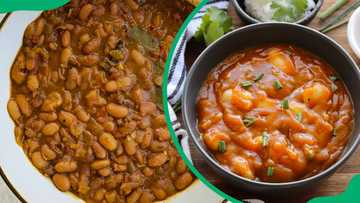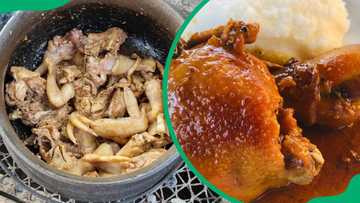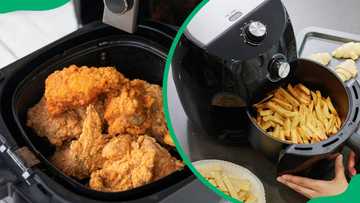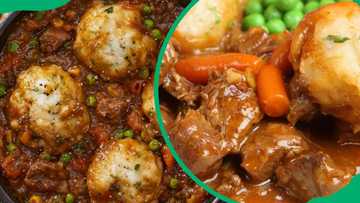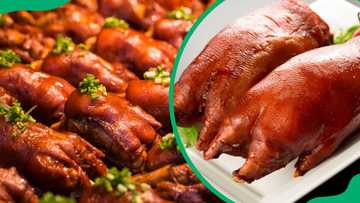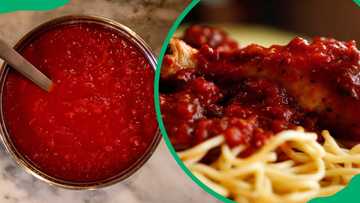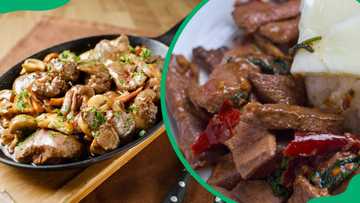Tender and juicy beef tongue recipe: A South African delight
Beef tongue is a staple in many culinary cultures worldwide, including South Africa. The delicacy is loved for its tenderness and versatility, but it must be cooked to perfection to enjoy its goodness. This article highlights one of the best beef tongue recipes to help you transform the dish into a masterpiece.
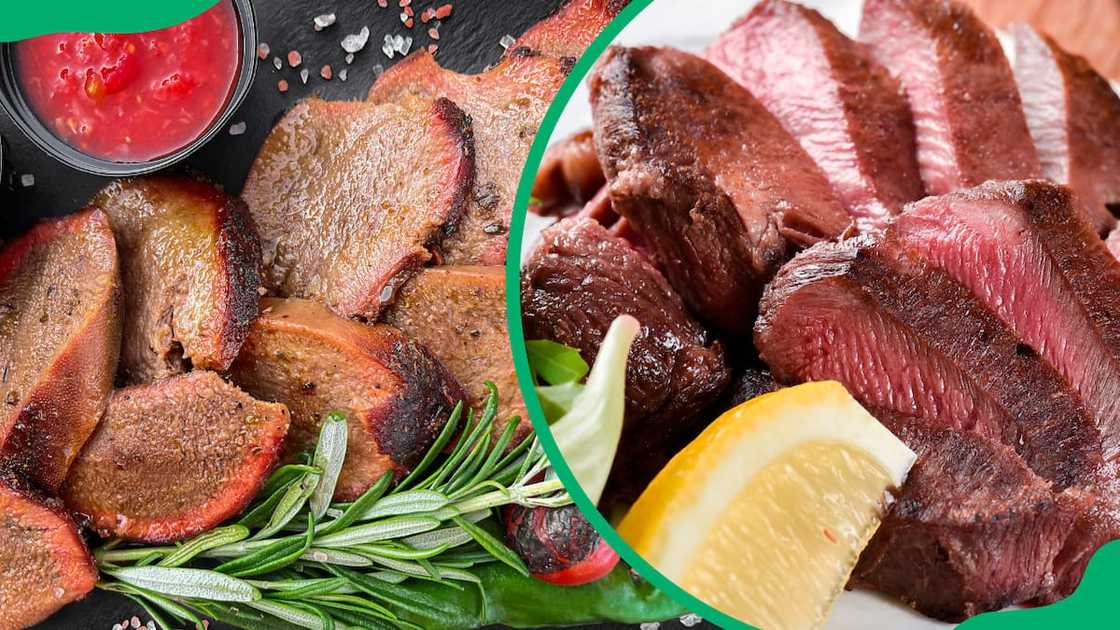
Source: Getty Images
TABLE OF CONTENTS
- Juicy beef tongue recipe in South Africa with barbeque sauce
- How to cook pickled ox tongue in South Africa
- How to cook beef tongue in a pressure cooker
- FAQs
- What is beef tongue in South Africa?
- How long does it take to cook tongue in a pressure cooker?
- Do you peel beef tongue before or after cooking?
- What does cow tongue taste like?
- Is beef tongue tender or tough?
- What to serve with beef tongue
- How long does beef tongue last?
- How do you clean the beef tongue before cooking?
- Can you eat the skin of beef tongue?
- Can you eat beef tongue cold?
It is crucial to prepare the tongue properly, often done by slow-cooking through boiling or braising until tender. It is then let to cool down before peeling off its outer layer of skin while still warm. The dish is often accompanied by a curated blend of spices for added flavour.
Juicy beef tongue recipe in South Africa with barbeque sauce
Beef tongue can be enjoyed with various flavourful sauces like sweet mustard sauce, chakalaka, monkey gland sauce, and wine-infused sauces. Try the following recipe for a delightful dish with barbeque sauce.
- Yield: 4-6 servings
- Total preparation and cooling time: 4-5 hours
Ingredients
For the beef tongue, you will need the following items;
- 1 beef tongue (about 2-3 pounds)
- Water, enough to cover the tongue
- 2 bay leaves
- 1 large onion, quartered
- 4 cloves of garlic, peeled
- 1 teaspoon of black peppercorns
- 2 carrots, chopped
- 2 celery stalks, chopped
- Salt, to taste
For the barbecue sauce, you will need the following ingredients;
- 2 tablespoons of olive oil
- 1 onion, finely chopped
- 2 garlic cloves, minced
- 1 cup of tomato sauce or crushed tomatoes
- 1/4 cup of Worcestershire sauce
- 1/4 cup of apple cider vinegar
- 2 tablespoons of brown sugar
- 1 teaspoon of smoked paprika
- 1/2 teaspoon of ground cumin
- Salt and pepper, to taste
- Fresh parsley, chopped (for garnish)
Cooking instructions
To prepare the beef tongue, follow these steps;
- Rinse the beef tongue under cold water to remove any residue.
- Place the beef tongue in a large pot and add enough water to cover it. Add the bay leaves, quartered onion, garlic cloves, peppercorns, carrots, celery, and a generous pinch of salt.
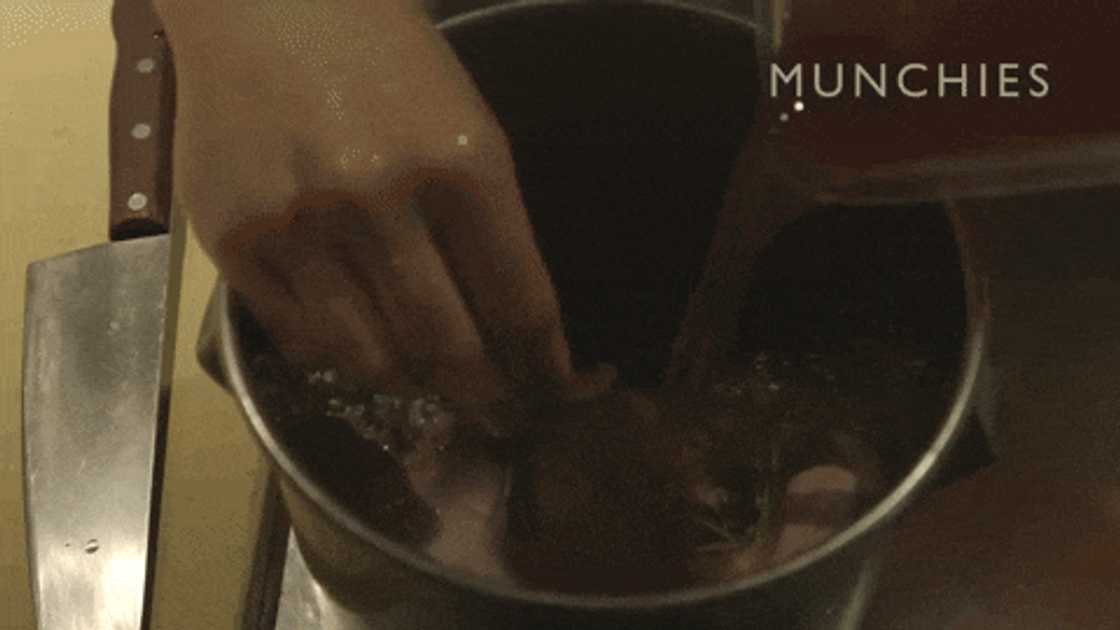
Source: UGC
- Bring the water to a boil, then reduce the heat to a simmer. Cover the pot and let it simmer for about 3 to 4 hours or until the tongue is tender. The cooking time may vary depending on the size of the tongue.
- Once the tongue is tender, remove it from the pot and let it cool enough to handle. Peel off the outer layer of the tongue's skin, which should come off easily after cooking.
- Once peeled, slice the tongue into small slices and set aside.
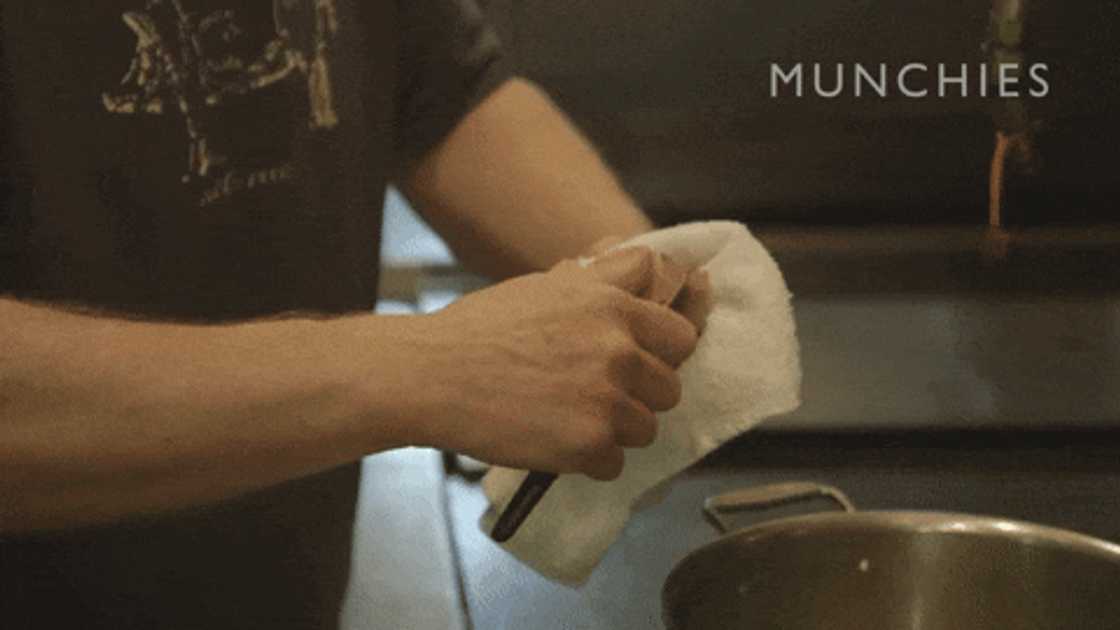
Source: UGC
To prepare the barbeque sauce, do the following;
- In a saucepan, heat the olive oil over medium heat. Add the chopped onion and minced garlic, cooking until soft and translucent, about 5 minutes.
- Stir in the tomato sauce, Worcestershire sauce, apple cider vinegar, brown sugar, smoked paprika, and ground cumin. Bring the mixture to a simmer.
- Let the sauce simmer for about 20 minutes or until it thickens slightly—season with salt and pepper to taste.
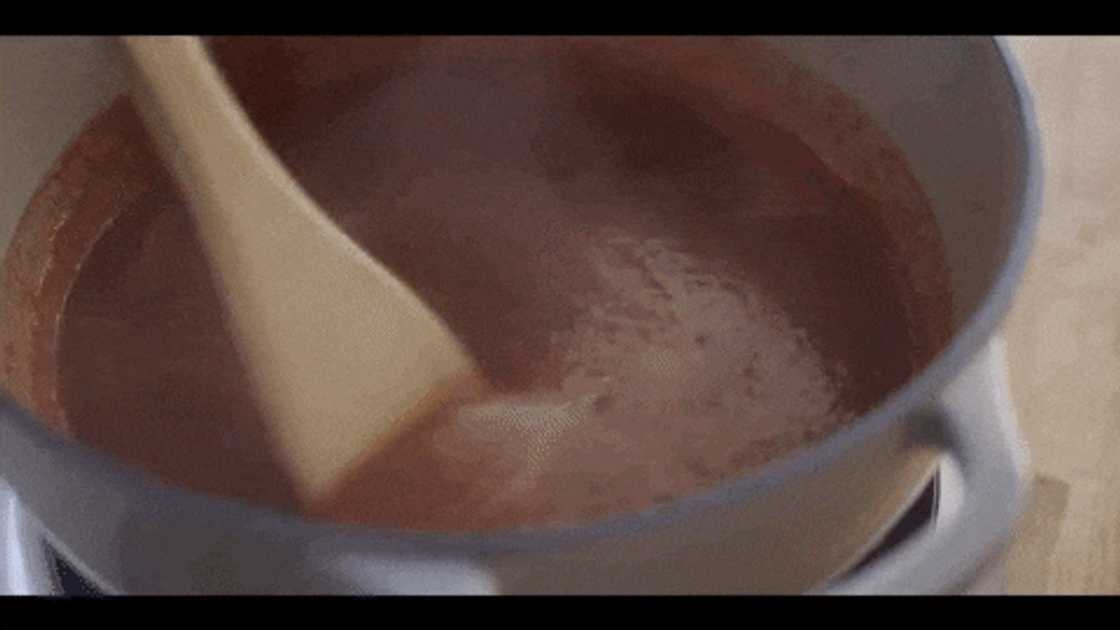
Source: UGC
- In a skillet or on a grill, quickly sear the beef tongue slices on both sides to add a bit of colour and texture.
- Spoon the warm sauce over the served slices, then garnish with chopped fresh parsley. Serve with barbeque sauce on the side for dipping.
How to cook pickled ox tongue in South Africa
Pickling beef tongue involves preserving the delicacy in a solution made of water, sugar, salt, vinegar, and spices. The process gives the dish a tangy and flavourful taste and extends the meat's shelf life. Try the following pickled ox tongue recipe for delicious results.
- Yield: 4-6 servings
- Total preparation and cooking time: 2-3 hours for cooking and 3-4 days for pickling
Ingredients
- 1 whole ox tongue (approximately 2-3 pounds)
- 1 cup white vinegar
- 1 cup water
- 2 tablespoons salt
- 2 tablespoons sugar
- 1 onion, peeled and quartered
- 2 cloves garlic, smashed
- 2 bay leaves
- 1 teaspoon whole peppercorns
- Additional spices such as cloves, allspice berries, or mustard seeds for extra flavour
Cooking instructions
To prepare the ox tongue, follow these simple steps;
- Rinse the beef tongue thoroughly under cold water to remove any debris or blood.
- Place the tongue in a large pot and cover it with cold water. Bring the water to a boil over high heat.
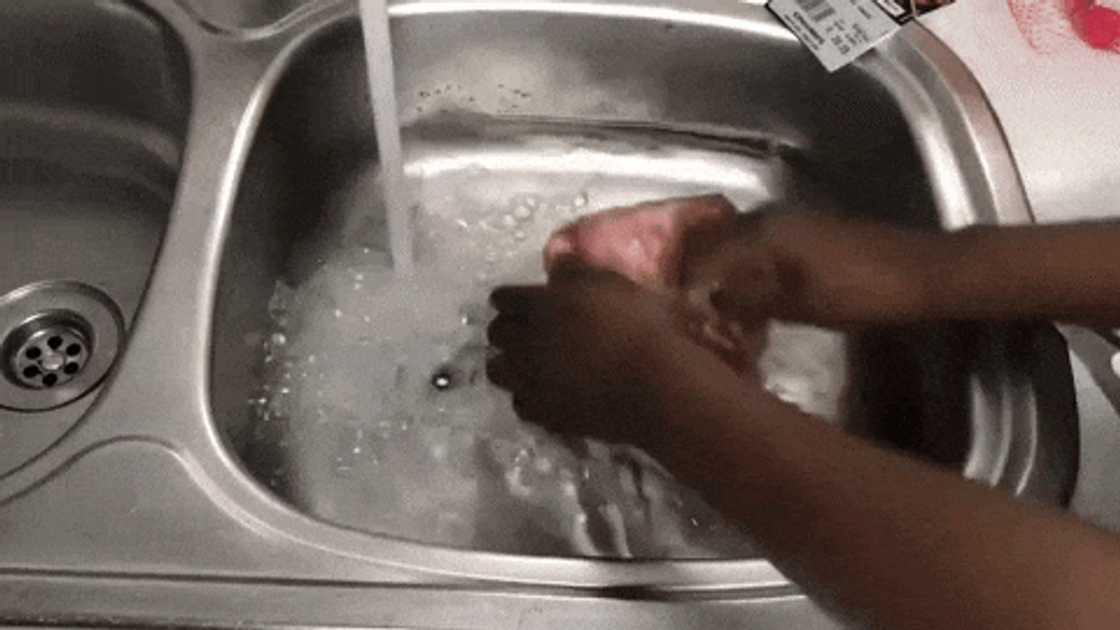
Source: UGC
- Once boiling, reduce the heat to a simmer and let the tongue cook for about 5 minutes. Skim off any foam that rises to the surface.
- Drain the tongue and rinse it under cold water. Peel off the tough outer layer of skin using a sharp knife.
To prepare the pickling solution, do the following;
- In a separate pot, combine the white vinegar, water, salt, sugar, onion, garlic, bay leaves, and peppercorns.
- Add any additional spices or herbs for extra flavour.
- Bring the pickling solution to a boil, then reduce the heat and let it simmer for about 5 minutes to allow the flavours to meld.
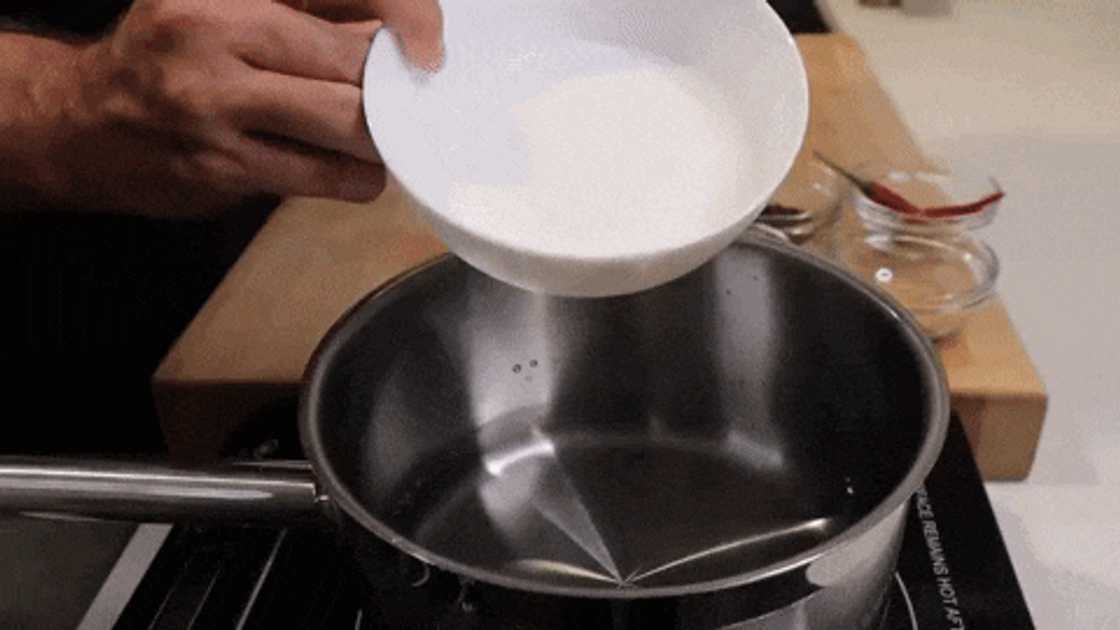
Source: UGC
To pickle the tongue, follow these simple steps;
- Place the peeled beef tongue in a large glass or ceramic container.
- Pour the hot pickling solution over the tongue, making sure it is completely submerged.
- Cover the container with a lid or plastic wrap and let the tongue marinate in the pickling solution in the refrigerator for at least 3-5 days. The longer it marinates, the more flavorful it will become.
To cook and serve the tongue, follow these steps;
- After marinating, remove the beef tongue from the pickling solution and discard the liquid.
- Place the tongue in a clean pot and cover it with fresh water.
- Bring the water to a boil, then reduce the heat to a simmer and cook the tongue for about 2-3 hours or until it is tender and easily pierced with a fork.
- Once cooked, remove the tongue from the pot and let it cool slightly.
- Slice the beef tongue meat thinly against the grain and serve it warm or chilled with your favourite condiments.
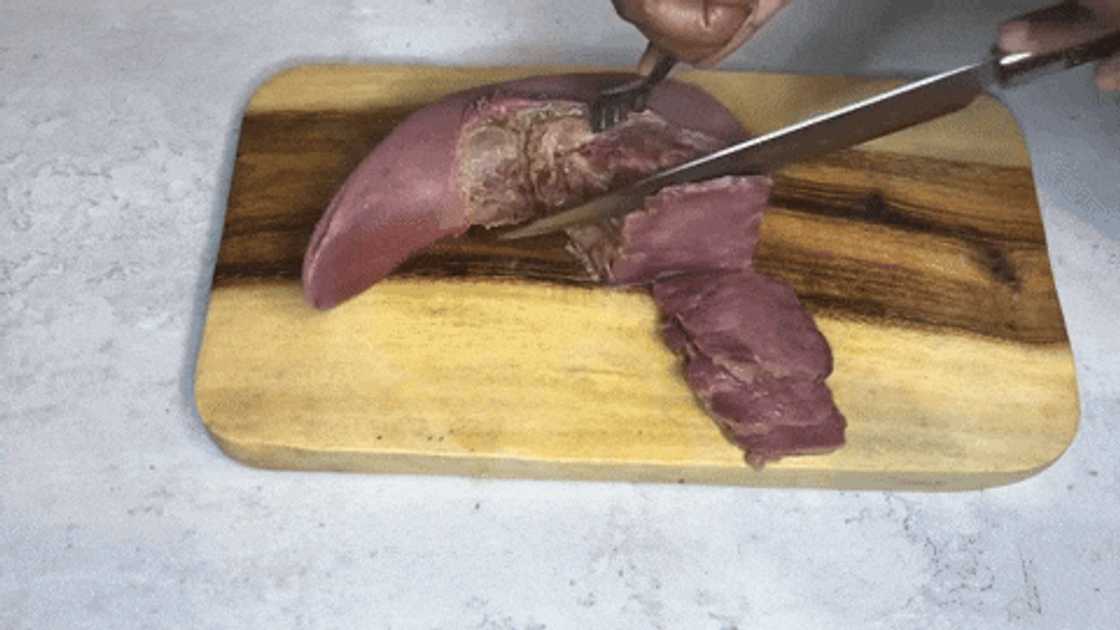
Source: UGC
How to cook beef tongue in a pressure cooker
Cooking cow tongue in a pressure cooker is a great way to achieve tender and flavourful results quickly. The method also retains the natural flavours and nutrients of the meat.
- Yield: 4-6 servings
- Total preparation and cooking time: 1-1.25 hours
Ingredients
- 1 beef tongue (approximately 2-3 pounds)
- Enough water to cover the tongue
- Salt and pepper to taste
- Aromatics like onion, garlic, bay leaves, and spices for added flavour
Cooking instructions
- Rinse the beef tongue under cold water and pat it dry with paper towels.
- Season the beef tongue with salt and pepper. Add aromatics like onion, garlic, bay leaves, and spices for extra flavour.
- Place the seasoned beef tongue into the pressure cooker.
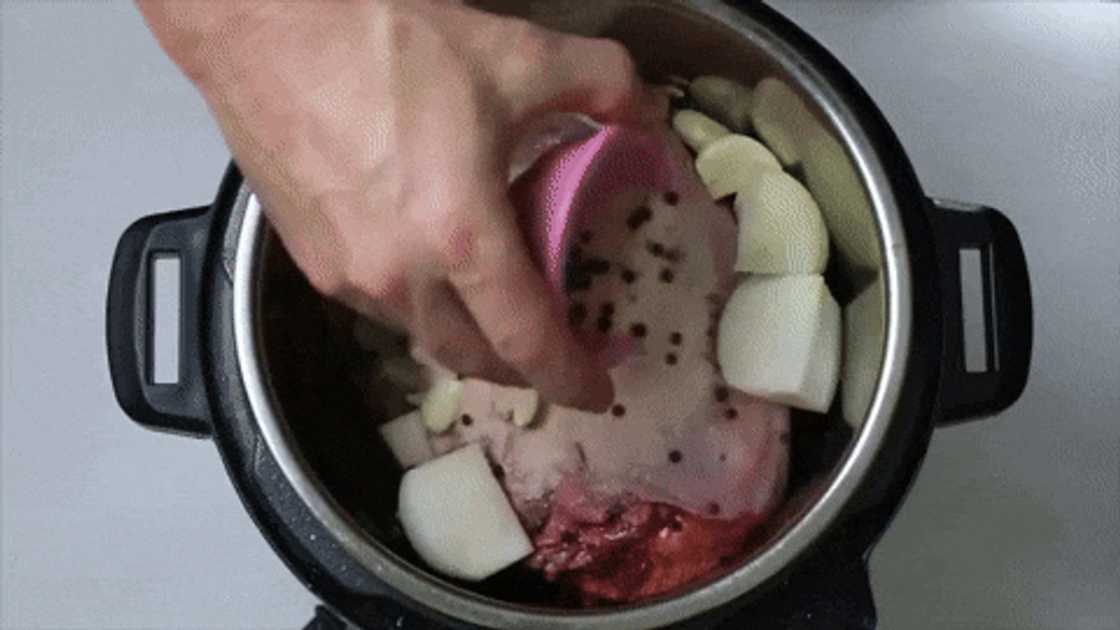
Source: UGC
- Add enough water to cover the tongue completely. Be careful not to exceed the maximum fill line of your pressure cooker.
- Close the pressure cooker lid securely and set it to high pressure.
- Cook the beef tongue for about 45-60 minutes. Cooking time may vary depending on the size and thickness of the tongue.
- Once the cooking time is up, allow the pressure to release naturally for about 10-15 minutes before manually releasing any remaining pressure.
- To check if the beef tongue is cooked thoroughly, insert a fork or knife into the thickest part. It should slide in easily with little resistance.
- Once the beef tongue is cooked, allow it to cook slightly, then peel off the outer layer of skin.Thinly slice it against the grain and serve it warm as a main dish or as an accompaniment to other dishes.
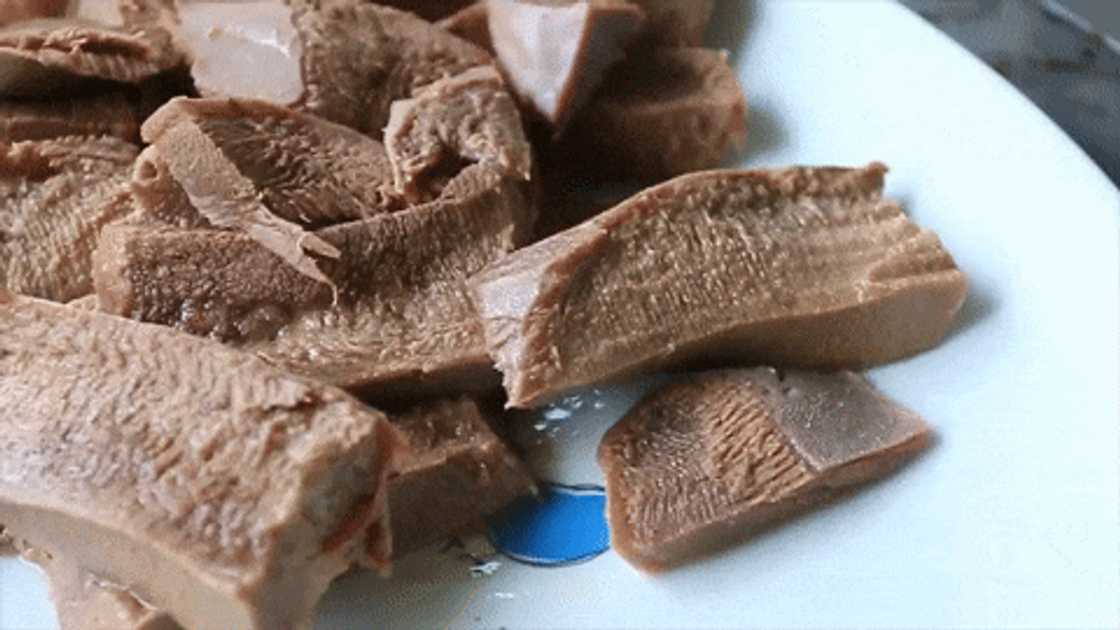
Source: UGC
FAQs
The combination of flavour, versatility, and cultural significance makes beef tongue a popular culinary choice worldwide. Here are some frequently asked questions about the beef delicacy.
What is beef tongue in South Africa?
Beef tongue is a popular South African cuisine often prepared by boiling or simmering for several hours until tender. It is then peeled to remove the outer tough skin and served in several ways, such as a cold dish, pickled tongue, hot dish, or curried tongue.
How long does it take to cook tongue in a pressure cooker?
The total time taken to cook tongue in a pressure cooker varies with the size, thickness, and type of meat. Beef tongue can take 40-60 minutes, while pork or lamb tongue can take 25-35 minutes. Ensure you check if the meat cut is cooked properly by inserting a fork or knife into the thickest part. It should slide in easily with little resistance.
Do you peel beef tongue before or after cooking?
The beef tongue has a tough outer skin that should be removed after the meat cut has been cooked. The cooking process helps break down the connective tissues, making it easy to peel off the skin. You can peel it off with your fingers or use a knife while it is still warm since letting it cool too much will make the skin stick.
What does cow tongue taste like?
Cow tongue has a mild taste, often described as beefy and slightly sweet. The flavour varies with the preparation method and the seasonings and spices incorporated.
Is beef tongue tender or tough?
Beef tongue is a tough cut of meat but can be tender when cooked properly. The dish should be cooked slowly for an extended period to break down the collagen and connective tissues. Ideal preparation techniques include simmering, braising, slow cooking, and pressure cooking.
What to serve with beef tongue
Ox tongue pairs well with several side dishes that complement its rich flavour. Popular options include mashed potatoes, roasted or steamed vegetables, green salad, coleslaw, rice pilaf, and sauteed mushrooms. Beef tongue is also a great filling for sandwiches.
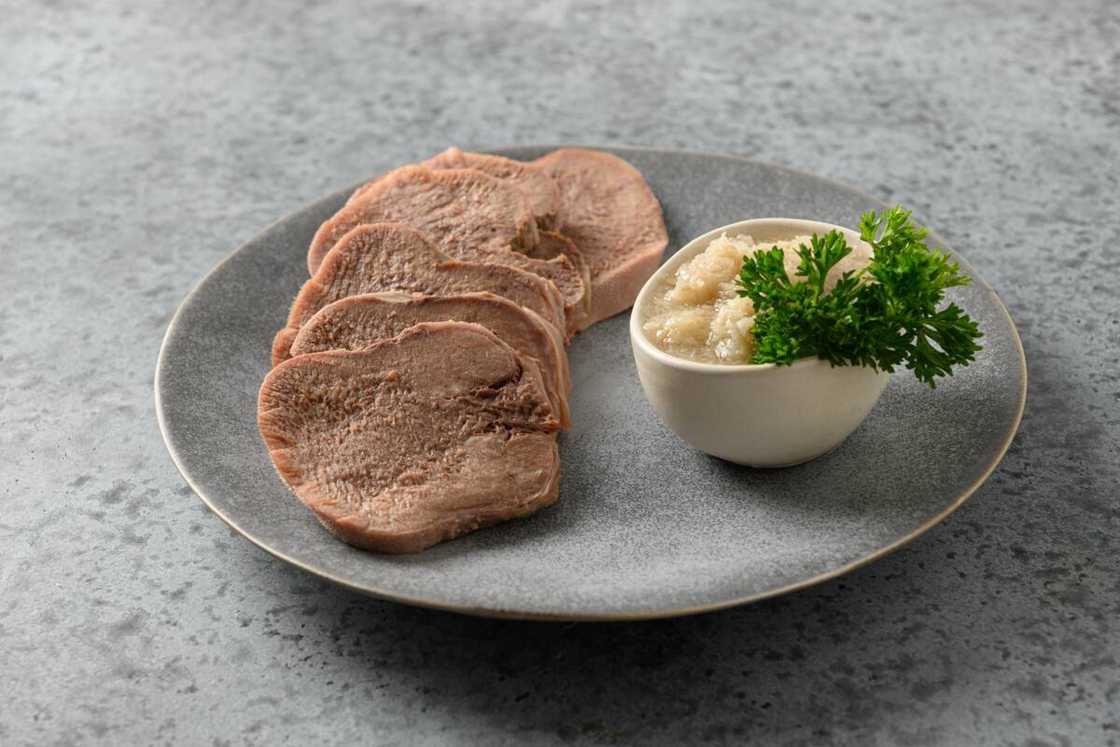
Source: Getty Images
How long does beef tongue last?
The shelf life of cow tongue depends on how it is stored. Raw tongue can be stored in the refrigerator (0-4°C) for up to four days and can stay in the freezer (-18°C or colder) for about three months if properly packaged.
How do you clean the beef tongue before cooking?
You should rinse the meat cut thoroughly under cold running water to remove surface impurities. You can then soak it in cold water for several hours to draw out any additional blood. After rinsing, carefully trim away any unwanted parts like excess fat or skin using a sharp knife.
Can you eat the skin of beef tongue?
The skin of beef tongue is edible, but most people find it unpalatable because of its very tough and chewy texture. The skin is often removed to expose the tender and flavourful meat underneath.
Can you eat beef tongue cold?
Cow tongue can be eaten cold. The delicacy can be served in sandwiches, as a cold appetizer or incorporated into salads. It should be adequately cooked beforehand until tender and its outer skin removed before refrigeration.
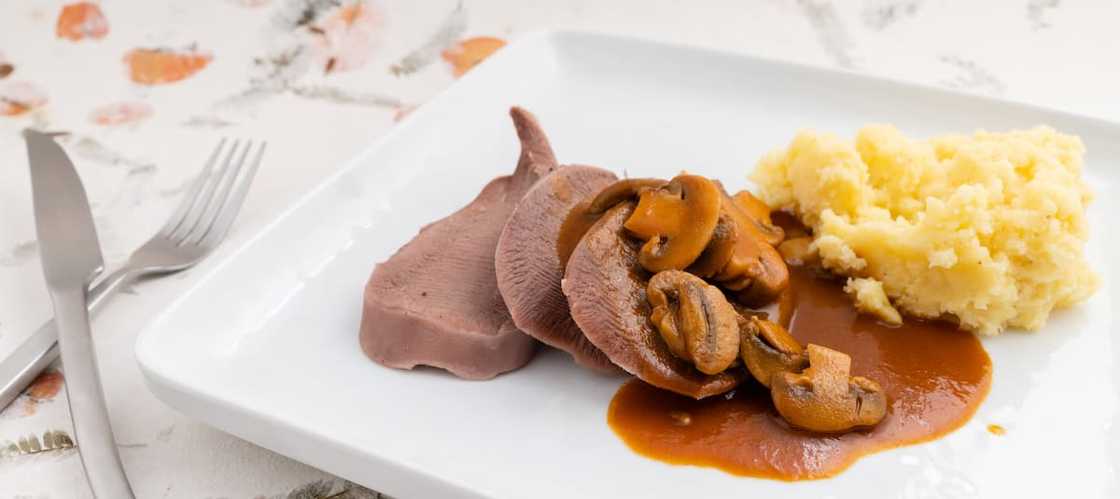
Source: Getty Images
The above beef tongue recipes offer a delightful journey through taste and tradition. Whether served as a main course or as a unique addition to a festive spread, the dish's appeal lies in the preparation process and incorporated ingredients.
READ ALSO: Ox liver recipe: 3 easy and tasty ways to prepare it
Briefly.co.za shared an easy recipe for preparing delicious ox liver. The nutrient-rich delicacy can be cooked in different ways, including sautéing, frying, grilling, or incorporating it into stews and casseroles.
Ox liver is one of the cheapest beef cuts, hence the best option if you want to maintain a nutritious diet on a budget. Check the article for more on how to transform the meat cut into a delicious meal.
Source: Briefly News



